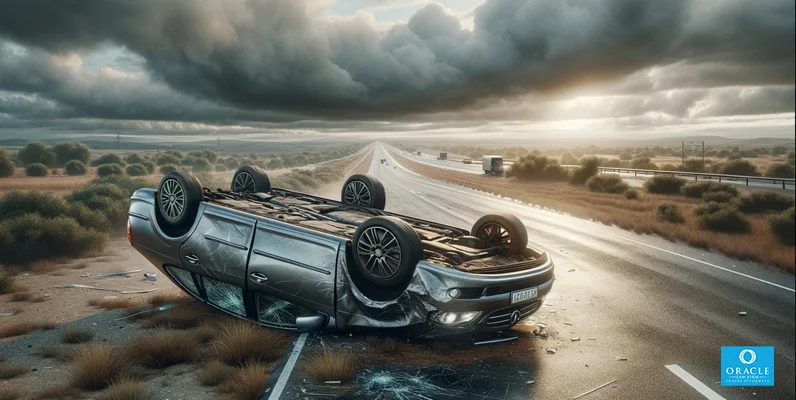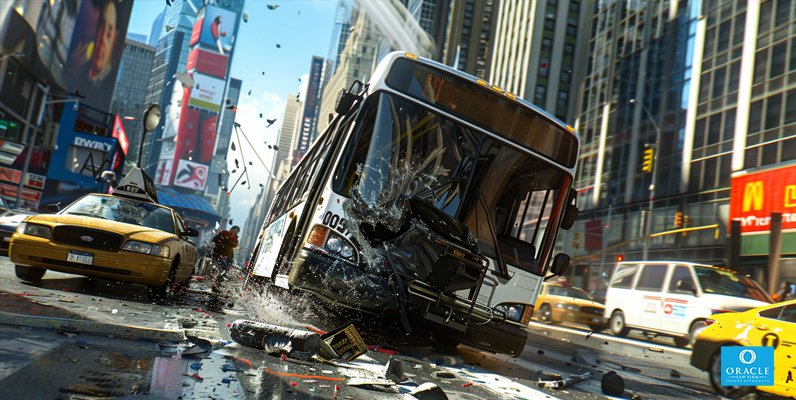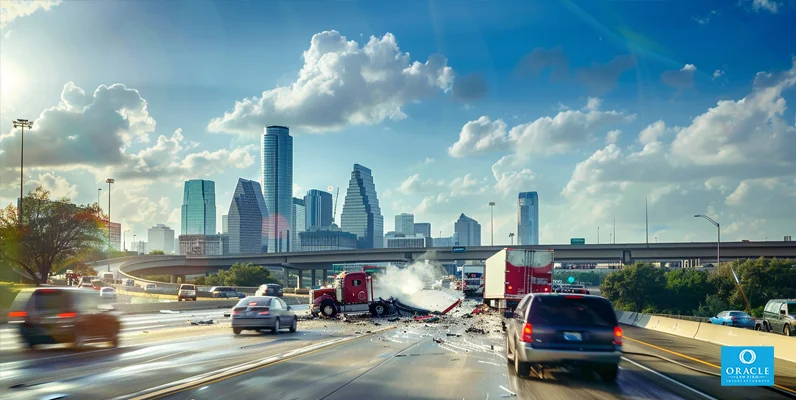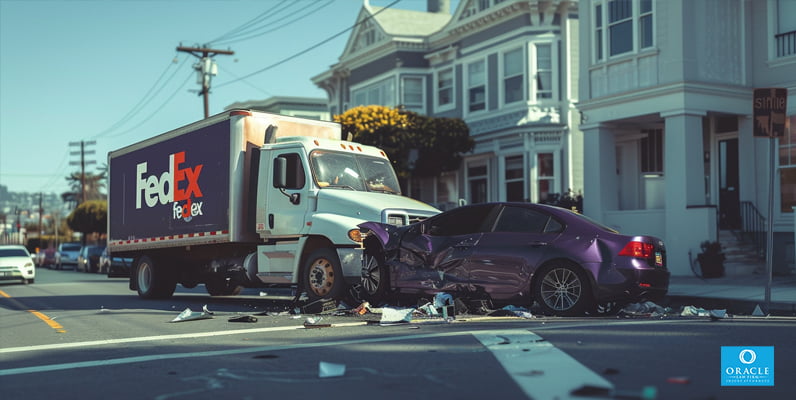Car rolled-over accident events are devastating, with complex causes and severe consequences. If you want to understand why these car rolled-over accidents occur, identify vehicles at higher risk, and learn the key steps to take in their aftermath, you’ve come to the right place. This article strips away the complexities, offering clear, actionable insights into preventing, surviving, and navigating the consequences of a car rolled-over accident.
Key Takeaways
- Rollover car accidents, often disastrous and fatal, are influenced by various factors, including driver error, environmental conditions, and vehicle type. Due to higher centers of gravity, SUVs, trucks, and vans are at increased risk.
- The anatomy of a rollover consists of the initial impact (leading to potentially severe injuries), the rolling motion (increasing injury severity with each vehicle-to-ground impact), and the final resting position, influencing the extent of occupant trauma.
- Legal considerations in rollover accidents involve determining negligence and fault, with victims having options for compensation covering medical costs, lost income, and suffering, necessitating thorough investigation and legal representation.
Understanding Rollover Car Accidents
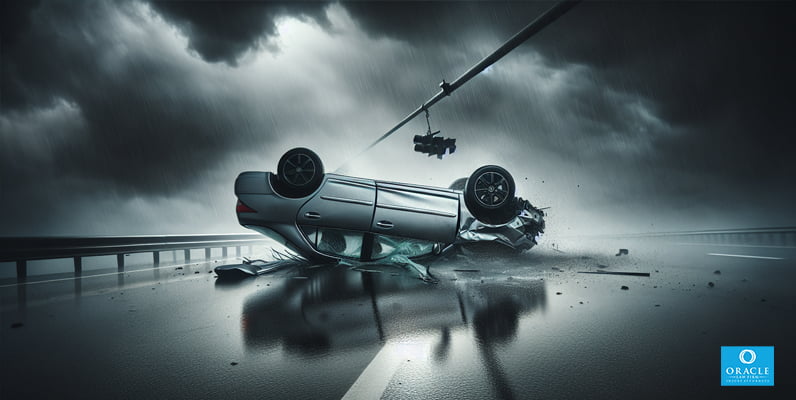
Rollover car accidents are among the most catastrophic types of motor vehicle accidents, often leading to severe injuries or fatalities. They are complex events triggered by various factors, including driver errors such as fatigue, distracted driving, or certain circumstances such as reckless driving, speeding, or tire failure. Additionally, the design of a vehicle can significantly influence its susceptibility to rollover accidents. Features such as vertical and lateral roof intrusion, impact resistance, vehicle height, and center of gravity placement can all affect rollover dynamics and the potential severity of injuries.
Rollover accidents are also heavily influenced by environmental factors. Some common environmental factors that can contribute to rollover accidents include:
- Poorly maintained roadways
- Potholes
- Faulty traffic lights
- Obstructions or hazards on the driving surface
These factors can increase the risk of traffic accidents, including fatal car accidents. Grasping the causes and consequences of these accidents is key to enhancing prevention and recovery methods.
Causes of Rollover Accidents
Many factors contribute to rollover car accidents, but one of the most common is driver error. Behaviors such as:
- Speeding
- Distracted driving
- Driving under the influence
- Fatigue
play a significant role in causing motor vehicle accidents, including rollovers. Speeding, in particular, is a major contributor to fatal car accidents, including rollovers. 40% of fatal rollover crashes involve excessive speeding, which not only increases the likelihood of a rollover but also the potential for ejection during the accident.
In addition to driver error, external factors such as tripped rollovers caused by potholes and curbs can also lead to rollovers. Keeping these potential causes in mind, maintaining safe driving habits becomes pivotal in minimizing the risk of rollover accidents.
Types of Vehicles Involved
Certain types of vehicles are more prone to rollovers than others. Vehicles with a tall and narrow build, such as SUVs, pickup trucks, and vans, are susceptible to rollover accidents due to their elevated center of gravity. Their higher centers of gravity increase the likelihood of tipping over during maneuvers such as sharp turns or sudden swerving, putting car crash victims at higher risk.
Data from 2021 shows the following:
- The proportion of rollover crashes was 7.0% for all vehicles.
- For SUVs, the proportion of rollover crashes was significantly higher at 13.1%.
- Single-vehicle rollover crashes, which mainly affect passenger vehicles, accounted for almost three-quarters of all motor vehicle crash-related rollover deaths.
- Certain models of SUVs and pickup trucks even show a higher propensity for rollovers.
The Anatomy of a Rollover Accident
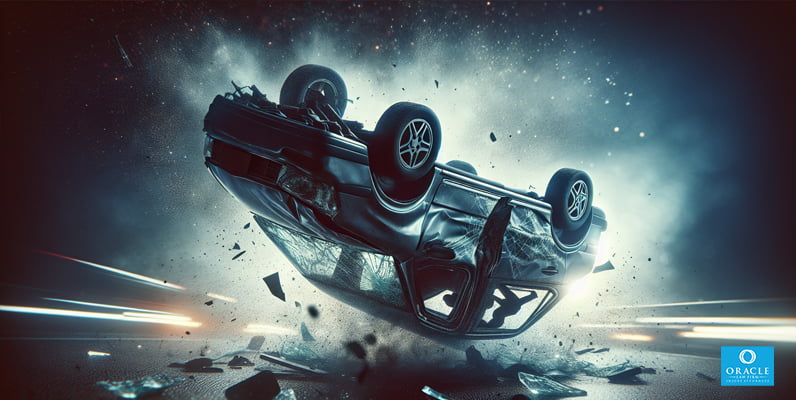
A rollover accident typically unfolds in three primary stages: the initial impact, the rolling motion, and the final resting position. Each stage carries its risks and potential injuries. Various factors, including vehicle design deficiencies, unfavorable road conditions, and incorrect driver conduct often cause the initial impact. These factors can lead to significant shifts in the vehicle’s center of gravity, frequently resulting in a rollover occurrence during a collision or sudden maneuvers.
Moreover, the initial impact can disorient the vehicle occupants, potentially resulting in more severe injuries as the rollover progresses. Injuries could be caused by being thrown against the interior of the vehicle.
Factors that influence the severity of the rolling motion, which constitutes the second stage, include:
- The vehicle’s speed at the time of the accident
- Roll rate
- Seatbelt usage
- The number of roof inversions
- The vehicle’s high center of gravity
The final resting position, the third stage, is influenced by seatbelt usage, the number of times the vehicle has overturned, and physical evidence from the crash site.
Initial Impact
Various factors can cause the initial impact of a rollover accident. Forceful side-impact collisions or tripping over road hazards such as potholes, uneven pavement, or curbs can lead to a sudden change in direction during the accident. This sudden change can subject the occupants to rapid changes in speed and force impacts. Moreover, the vehicle’s roof strength can affect the amount of space available for the occupants, potentially resulting in a range of trauma, including head, neck, chest, and extremity injuries.
The force exerted during the initial impact of a rollover accident can be significant enough to cause severe injuries, such as:
- Traumatic brain injury
- Spinal cord injury
- Broken bones
- Cuts, scrapes, and bruises
Rolling Motion
The rolling motion is a critical stage of a rollover accident. The vehicle’s structure can be compromised during this stage, seriously threatening occupant protection measures. The rolling motion can lead to various injuries, including:
- Traumatic brain injury
- Spinal cord injury
- Broken bones
- Whiplash
- Scrapes and bruises
- Chest injuries such as rib fractures and lung contusions.
The contributing forces in the rolling motion of a rollover car accident include the centrifugal force resulting from the tire-road friction. Driving at high speeds significantly amplifies the likelihood of a rollover accident. Higher speeds can result in increased roll distance and more vehicle-to-ground impacts, leading to heightened intensity of rolling motion and a greater risk of occupant injury.
Final Resting Position
The final resting position is the last stage of a rollover accident. Several factors, such as:
- seatbelt usage
- roof inversions
- restraint usage
- occupant ejection
- the number of quarter turns during the roll
exert influence on this position. In the event of a vehicle overturning and coming to rest on its roof or side, there is a high likelihood of the roof collapsing, leading to potentially fatal or serious injuries to occupants.
Studies indicate that the final resting position of a vehicle significantly impacts the severity of injuries sustained by occupants during a rollover accident. It can provide insight into the force of the rollover and the likelihood of more severe trauma experienced by the vehicle’s occupants.
Injuries Commonly Sustained in Rollover Accidents

Common injuries sustained in rollover accidents include traumatic brain injuries, spinal cord injuries, broken bones, and internal organ damage. The complexity and violent nature of these accidents increases the likelihood of severe injuries. Brain injuries sustained in rollover accidents can vary from concussions to more serious types such as brain contusions, skull fractures, acquired brain injuries, and potentially brain penetration.
In addition to brain injuries, other common car accident injuries in rollover accidents include:
- broken bones
- lacerations
- whiplash
- injuries such as slipped and herniated discs, along with potential nerve damage
These injuries underscore the importance of understanding rollover accidents and car accident deaths to prevent them better and mitigate their consequences.
Prevention and Mitigation
Preventing and mitigating rollover accident injuries involves several strategies. Advancements in car design, such as:
- Reinforced roof pillars
- Side curtain airbags
- Occupant restraint systems like seat belts and airbags
- Optimization of vehicle stability and load securing
have been made to minimize injuries in rollover accidents. Seat belts and airbags function collaboratively as effective occupant restraint systems; seat belts prevent ejection from the vehicle, while airbags protect the head, neck, and chest from hitting the vehicle’s interior surfaces, significantly reducing the risk of serious injury.
Besides vehicle design, personal behavior is another significant factor in preventing rollover accidents. Here are some effective methods for preventing rollover accidents:
- Adhering to the speed limit
- Maintaining proper tire inflation
- Avoiding distractions
- Being vigilant for potential trip hazards on the road
- Driving sober
- Refraining from using electronic devices while driving
- Lowering the vehicle’s center of gravity
- Avoiding adding high-mounted weight
Legal Aspects of Rollover Accidents

Comprehending the legal aspects of rollover accidents is vital for victims seeking justice and compensation. Negligence has a significant impact on determining fault in rollover accidents. Examples of negligent actions that can lead to rollover crashes include drunk driving, speeding, distracted driving, illegal lane changes, and reckless driving. The legal obligations of a driver involved in a rollover accident encompass assisting injured individuals and establishing liability by collecting evidence and seeking expert analysis.
Victims of rollover accidents have various legal options, including filing a wrongful death claim, settling the case out of court, pursuing premises liability suits, seeking compensation for injuries, and suing the car manufacturer in cases of vehicle design flaws. They may receive compensation that includes property damage, medical costs, lost income, pain and suffering, wrongful death damages, medical expenses, lost wages, and emotional distress. Sometimes, a wrongful death lawsuit may be the appropriate course of action.
Establishing Fault
A comprehensive investigation of the incident is required to determine fault in a rollover accident. Numerous crucial factors need to be taken into account, such as:
- Vehicle characteristics and design
- Road conditions
- Driver behavior
- Negligence
- Recklessness
Determining negligence involves assessing factors such as reckless driving, speeding, or other driver’s negligence that may have caused the accident.
Vehicle malfunction, including problems with tires, electrical systems, steering, or brakes, may also play a role in contributing to faults in rollover accidents. Moreover, prevailing weather conditions at the time of the accident, such as heavy rain, snow, ice, fog, or strong winds, can significantly impact road conditions and visibility, thereby increasing the likelihood of accidents.
Compensation for Victims
Compensation for rollover accident victims may include:
- Medical expenses
- Hospitalization
- Surgery
- Short- and long-term disability insurance
- Medicare or Medicaid
- Social Security Disability benefits
Through personal injury claims, victims may also receive compensation for non-economic damages, such as physical, emotional, and financial hardships.
The amount of compensation is determined based on unique factors, including the severity and impact of the accident, with economic, non-economic, and punitive damages all considered if applicable. Courts commonly utilize the Per Diem method to calculate compensation for pain and suffering. This method involves assigning a daily compensation rate and multiplying it by the number of days the victim has been affected by their injuries.
In general, the typical settlement range for rollover car accident cases is between $19,000 and $25,446.84 and may also encompass future medical expenses and future lost income.
Safety Tips to Avoid Rollover Accidents
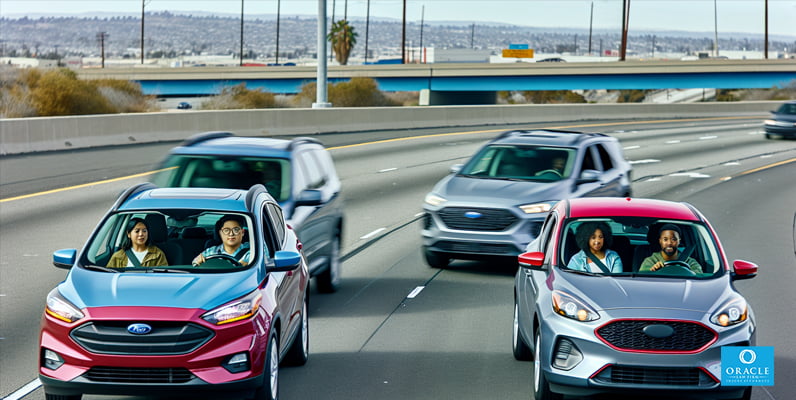
To avoid becoming part of the motor vehicle accident statistics, following safety tips to minimize the risk of rollover accidents is important. Adhering to the recommended speed limits and ensuring proper tire inflation can significantly reduce the risk of rollover accidents. Underinflated tires can reduce traction and increase the chances of losing control, leading to potential rollovers.
Maintaining full concentration on the road by avoiding distractions is crucial for preventing rollover accidents. Full concentration enables quicker reactions to sudden changes or dangers on the road, thus reducing the risk of accidents. Adopting such safe driving habits can significantly reduce the likelihood of being involved in a rollover accident.
What to Do After a Rollover Accident
In the unfortunate circumstance of a rollover accident, knowing the appropriate steps to take is crucial. The necessary actions include:
- Checking yourself and others for injuries
- Moving to a safe location if possible
- Calling emergency services
- Documenting the accident scene
- Exchanging information with other parties involved
- Contacting your insurance company
Seeking medical attention after a rollover accident is crucial for ensuring your overall health and can also play a vital role as substantial evidence in a personal injury claim.
Furthermore, understanding your rights, including the statute of limitations and potential compensations, is essential. Injuries from rollover accidents can cause temporary or permanent disabilities, potentially leading to loss of income. Working with an attorney can provide victims with:
- Increased chances of receiving higher compensation coverage
- Ensuring proper handling of all paperwork
- Protecting their rights throughout the legal process.
Seeking Medical Attention
Seeking medical attention promptly after a rollover accident is of utmost importance. Depending on the severity of your injuries, you should consider visiting an emergency room, a primary care physician, or an urgent care center. Calling 911 to report the accident and seeking medical attention for any injuries is critical, as some injuries, such as severe head injuries, internal organ damage, and neck or skull fractures, need urgent care.
In some cases, concealed injuries may become evident days or weeks after a rollover accident. This delayed manifestation can be associated with injuries that are not immediately evident. Therefore, even if you feel fine after the accident, it is recommended to get a check-up to avoid the possible worsening of untreated injuries and long-term complications.
Working with an Attorney
Enlisting the assistance of an attorney following a rollover accident can guide you through the legal process and enhance your likelihood of securing just compensation for your injuries and damages. An attorney’s responsibilities in a rollover accident case include:
- Representing the victim during negotiations
- Emphasizing the merits of the case
- Utilizing evidence to bolster the claim
- Facilitating the recovery of compensation for various losses such as lost wages, future income, medical expenses, and emotional distress
- Guiding the victim through the legal processes to ascertain appropriate compensation
A comprehensive investigation of the incident is required to determine fault in a rollover accident. Numerous crucial factors must be considered, such as vehicle characteristics and design, road conditions, driver behavior, negligence, and recklessness. Legal counsel may gather evidence such as witness and driver statements, photographs, videos or documentation, expert testimony, medical records and receipts. To establish fault, legal counsel will determine the percentage of fault assigned to each driver, prove negligence by establishing a duty of care, breach of that duty, and consequent damages, and conduct a comprehensive investigation of the accident.
Summary
Rollover car accidents are among the most catastrophic types of motor vehicle accidents, often leading to severe injuries or fatalities. Understanding the intricacies of such incidents, their causes, the types of vehicles involved, and their potential outcomes is crucial for prevention and recovery. It’s also essential to understand the legal aspects of rollover accidents so that victims can seek justice and compensation in the event of such an accident.
Adopting safe driving habits and following safety tips can significantly reduce the likelihood of being involved in a rollover accident. However, should such an incident occur, knowing what to do after a rollover accident and seeking immediate medical attention and legal counsel can make a difference in the outcome. Remember, the road may be tough, but you can navigate it safely, armed with knowledge and vigilance.
Frequently Asked Questions
What is a rollover in a car accident?
A rollover in a car accident occurs when a vehicle tips over onto its side or roof due to tripping over an object or turning too quickly, potentially rolling multiple times before coming to a stop.
Is a rollover covered under collision?
Yes, a rollover is covered under collision insurance, regardless of fault. It protects a vehicle when involved in an accident, including a rollover or collision with another vehicle.
What are the chances of surviving a rollover accident?
The chances of surviving a rollover accident are serious, with around one-half of people in rollover accidents ending in fatalities. Wearing a seatbelt is crucial, as nearly 4 out of 5 people killed in these crashes were not wearing seatbelt.
What happens to your body in a rollover accident?
In a rollover accident, your body can experience serious injuries such as spinal cord damage, paralysis, neck injuries like whiplash, and back injuries, including fractured vertebrae and herniated discs. Take extra precautions while driving to avoid such accidents.
What causes rollover car accidents?
Driver errors, road conditions, and vehicle designs can cause rollover car accidents. It’s important to be cautious and attentive while driving to prevent such accidents.
